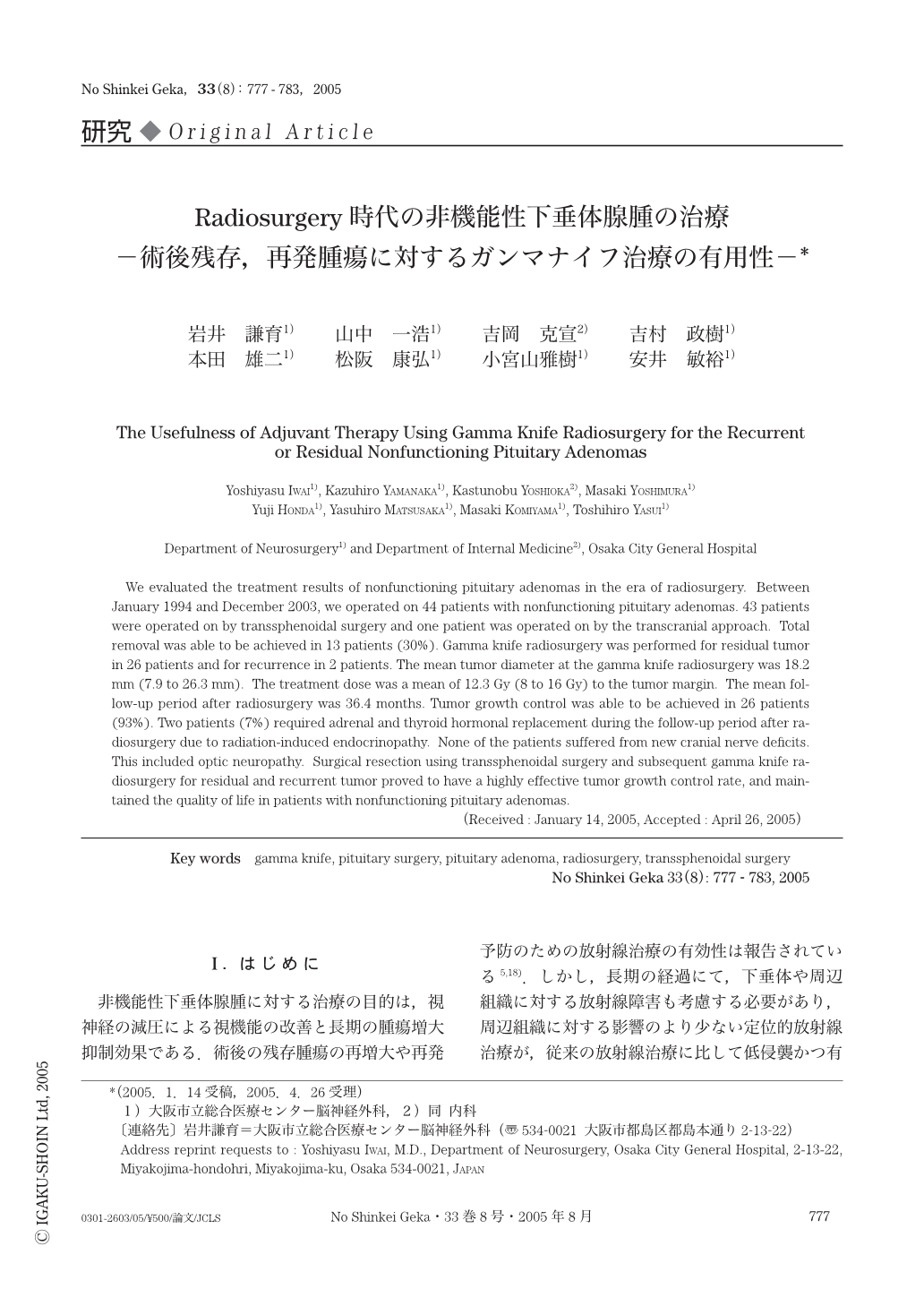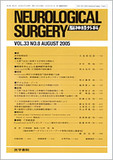Japanese
English
- 有料閲覧
- Abstract 文献概要
- 1ページ目 Look Inside
- 参考文献 Reference
Ⅰ.はじめに
非機能性下垂体腺腫に対する治療の目的は,視神経の減圧による視機能の改善と長期の腫瘍増大抑制効果である.術後の残存腫瘍の再増大や再発予防のための放射線治療の有効性は報告されている5,18).しかし,長期の経過にて,下垂体や周辺組織に対する放射線障害も考慮する必要があり,周辺組織に対する影響のより少ない定位的放射線治療が,従来の放射線治療に比して低侵襲かつ有用と思われる.非機能性下垂体腺腫に対する定位放射線治療の1つであるガンマナイフの治療成績として,高い腫瘍増大抑制効果が報告されている 21,23).またガンマナイフ治療を行う立場からは,手術の目的は視神経と腫瘍の距離を十分保てるまで摘出を行うことであるとの意見もあるが15),手術とガンマナイフをどのように組み合わせるかは,十分検討されていない.われわれは,ガンマナイフの有用性を考えた非機能性下垂体腺腫に対する治療を行ってきたのでその治療成績を報告する.
We evaluated the treatment results of nonfunctioning pituitary adenomas in the era of radiosurgery. Between January 1994 and December 2003,we operated on 44 patients with nonfunctioning pituitary adenomas. 43 patients were operated on by transsphenoidal surgery and one patient was operated on by the transcranial approach. Total removal was able to be achieved in 13 patients (30%). Gamma knife radiosurgery was performed for residual tumor in 26 patients and for recurrence in 2 patients. The mean tumor diameter at the gamma knife radiosurgery was 18.2 mm (7.9 to 26.3 mm). The treatment dose was a mean of 12.3 Gy (8 to 16 Gy) to the tumor margin. The mean follow-up period after radiosurgery was 36.4 months. Tumor growth control was able to be achieved in 26 patients (93%). Two patients (7%) required adrenal and thyroid hormonal replacement during the follow-up period after radiosurgery due to radiation-induced endocrinopathy. None of the patients suffered from new cranial nerve deficits. This included optic neuropathy. Surgical resection using transsphenoidal surgery and subsequent gamma knife radiosurgery for residual and recurrent tumor proved to have a highly effective tumor growth control rate,and maintained the quality of life in patients with nonfunctioning pituitary adenomas.

Copyright © 2005, Igaku-Shoin Ltd. All rights reserved.


